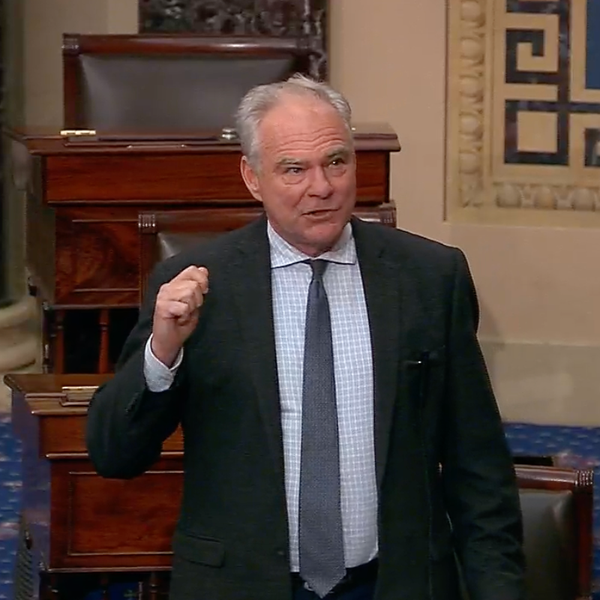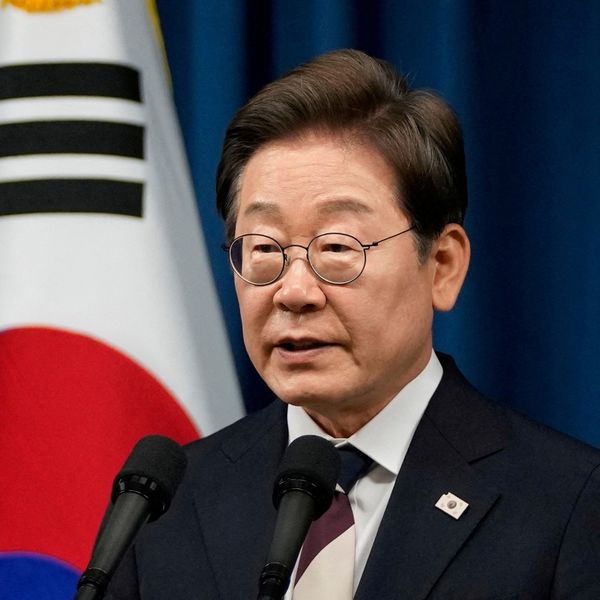Last week Congress queued up this year’s National Defense Authorization Act (NDAA), the annual national security policy bill that touches almost all aspects of U.S. defense policy — for better or for worse — for final passage.
It’s a huge bill, but unlike the recently enacted Bipartisan Infrastructure Bill, known as BIF, that President Biden signed into law on November 15, it’s not a mere 1,039 pages. This monster is 2,165 pages. While it comes with an official explanatory statement, there remains much that is either explained away with fuzzy trivialities, or not explained at all.
For example, there are tens of billions of dollars in earmarks (pork) added by members of the House and Senate for various vested interests. It also comes with literally hundreds of policy proscriptions: some of them hotly, even thoroughly debated, others slipped quietly under the door with only vague or inadequate media analysis.
One little gem is something titled “Commission on Planning, Programming, Budgeting and Execution Reform,” buried in Section 1004 of the bill.
So what’s wrong with fixing DoD’s acquisition system, even if you’re just setting up another “blue ribbon” commission to study, then write recommendations? Everyone knows the whole system is broken and can only produce grotesquely overpriced weapons that are delivered years late, can’t pass any decent testing, and don’t give our pilots, soldiers and ship crews what they need. Why not convene a panel of experts to sort out a solution?
First, consider the atmosphere surrounding this commission. Earlier this year, DoD announced that key routine reports on weapons costs, known as Selected Acquisition Reports (SARs), were cancelled for this fiscal year. If there was a peep of complaint from a single member of Congress or any of the mainstream think tanks or press, I missed it. The one industry media article was generally ignored. These SARs are routinely slow in coming and — in hindsight — always underestimate actual costs, but to kill them off reeks of trying to hide the elephant behind a fig leaf.
To reinforce an impression of studied obliviousness, consider an example. In June 2020, DoD sent an “Independent Cost Report” (ICE) on the F-35 to the House and Senate Armed Services Committees. The text, a reporter’s follow up questions, and a little simple math made it obvious there was a major cost increase (as much as $63 billion) in the F-35 program in its procurement and development. The costs to fix various deficiencies and to add various needed upgrades were mostly the culprits. None of it made it to the public, even in a hearing in the House Armed Services Committee on the F-35 with GAO and others.
If you want a stronger taste of the quality of oversight on defense issues in Congress, tune in on C-SPAN to any oversight hearing in any of the four defense committees in the House or Senate. Speeches in lieu of questions abound. If there are any actual questions, they are typically cribbed from a staff memo. The answers from the DoD or industry witnesses are short and reassuring; the people being “questioned” know there will be no follow up, even when they fog up the truth. They are always right. Getting to the bottom of the matter is the one thing that is not going on.
Back to this new commission. The 14 members of it will consist of “recognized experts” from the public, appointed by the Secretary of Defense (two members) and — wait for it — the same somnambulators who don’t bother with real questioning in hearings: the leaders in the House and Senate Armed Services Committees, the House and Senate Defense Appropriations Subcommittees, and the political leaders of the full House and Senate. One doesn’t have to stretch the imagination to speculate what type of person the Congressional defense apparatchiks are going to select: a smattering from industry and a smattering from the mainstream think tanks. The only discernible differences between these appointees will be their respective politics from the right and the left, but they will be of one voice when it comes to their overall outlook:
— We need to speed things up to catch up with the Chicoms and the Rooskies (who spend their time and money imitating us, even with the new over-hyped hypersonic weapons).
— We need to sweep away unnecessary U.S. government bureaucracy (what they actually mean are independent cost assessors, rigorous testers, and anyone dimly resembling a skeptic).
— We need to liberate industry (the past, present and future employers of most of these likely commission members) to spend more money more quickly
And finally, if you missed it the first time:
— We need more money to “catch up” with the Chinese and Russians (who by the way now spend about a third – put together – on defense as we do).
We have seen it time and time again: they start out saying — correctly — how terrible the current system is, but then they write recommendations to make it all worse by stripping out anything that might identify what the contractors will actually spend and how they spend it, whether a weapon actually meets a real combat need, or works as promised as shown by good and early testing.
Meanwhile they will claim that reports to Congress should, of course, be all classified and, thus, remain unread, especially by the public. Then they cover it up with some nice sounding but ineffectual change. In the past, it was to appoint an acquisition “czar” and then a management executive, but those faddish ideas went away when shown ineffectual, usually because the system appointed people who were actually experienced but mostly in exercising the loopholes in legislation rather than what was intended. Despite a pristine conventional wisdom reputation, the Packard Commission of the mid-1980s was a classic example of this kind of phony reform.
The real intent of the new commission is further revealed in how it is to be supported. The Secretary of Defense is encouraged to offer a liaison and detailees to keep tabs on the inner workings. The commission is authorized to seek further support from DoD’s in-house (and corporation) funded think tanks, such as the Rand Corporation. Finally, so-called “independent” help is authorized from 501(c) (3), tax-exempt think tanks. The ones almost certain to be tapped are the Center for Strategic International Studies (CSIS) or the Center for a New American Security (CNAS), both of them largely funded by both defense corporations and DoD.
So much for independence. Unsurprisingly, the Government Accountability Office is shut out from offering support — let alone an analysis of the recommendations. Perhaps the icing on the cake is a provision to allow the commission to “accept, use, and dispose of gifts or donations of services, goods, and property from non-Federal entities for the purpose of aiding and facilitating the work of the commission.” Gee, one wonders if any defense corporations will offer just a little help. It is sure to be accepted.
This is not to be a commission of independently minded, objective professionals who want real change in the DoD acquisition system; it is to be DoD itself, the non-oversight congressional defense committees, captured think tanks and defense corporations themselves doing the analysis and recommendations. It will be business-as-usual inspecting its own navel.
Those fussy, tedious documents on the cost of weapons are never right anyway (they always underestimate), so let’s water them down and classify anything that smacks of revelation. Check with testing to see if weapons actually work? Can’t, they might fail. We’ll fix it later…. maybe. Competition to push the costs down? That’s just a bureaucrat’s scheme to clog the process with paperwork (also called documentation). Replace “cost plus” (everything the contractor spends plus more) contracts with real “fixed price” ceilings? Why, that’s socialism (it slows the money flow to contractors).
The commission members are to be appointed 30 days after the bill is enacted. Some have probably already been selected. They will finish and report in 2023. We will know more precisely what they will say in 2023 when we see who is appointed and what organizations will be feeding them data and advice. It is all too easy to see where it is going.
I hope I am wrong, but I doubt it. In any case, watch these appointments; watch them carefully, very carefully.















